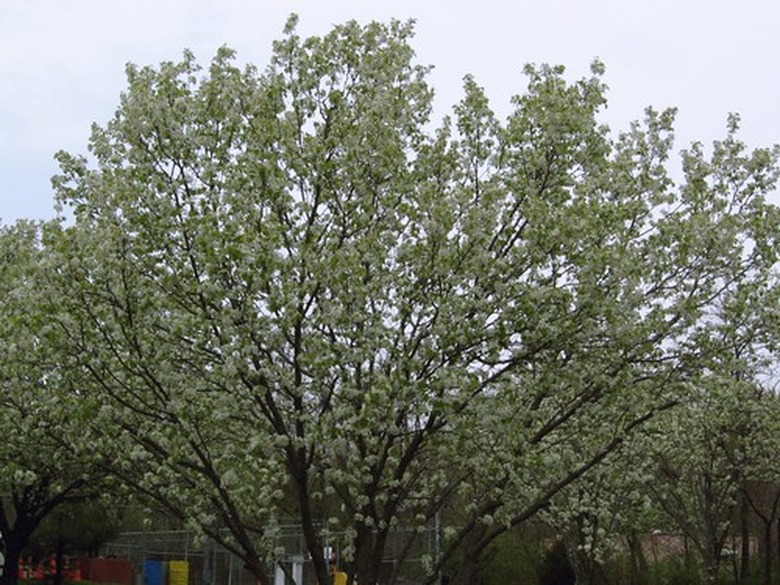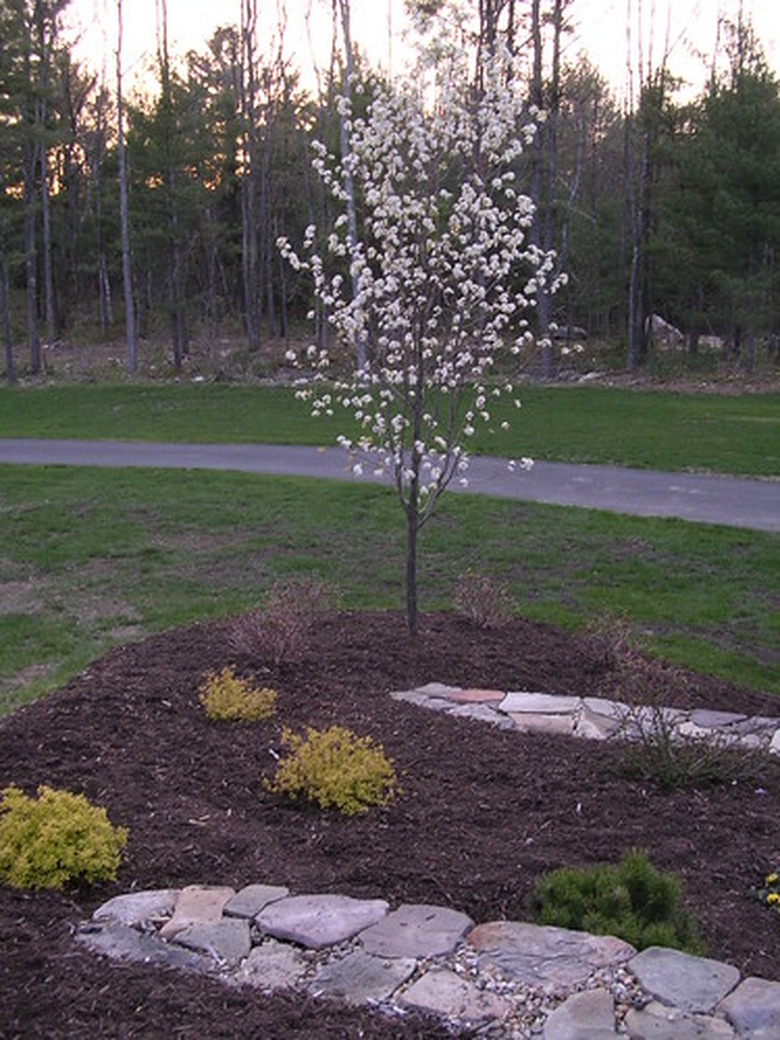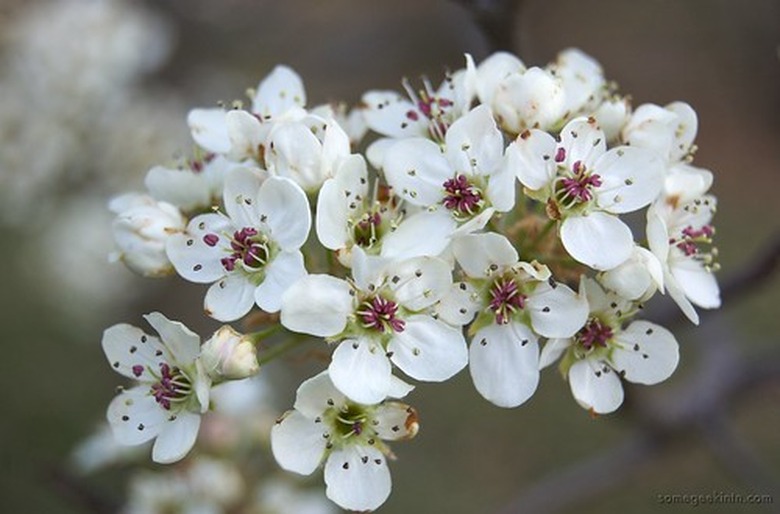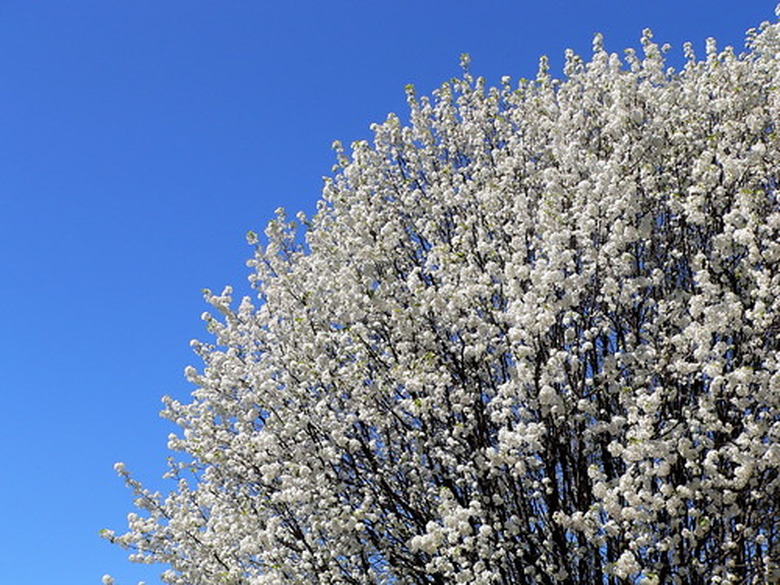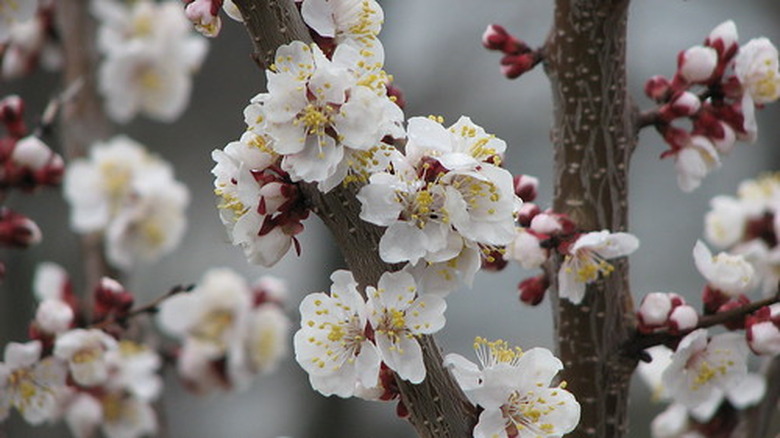About Cleveland Pear Trees
The Cleveland pear tree is a deciduous, ornamental pear tree known for its hardiness and adaptability. A hybrid of the Bradford pear, known as the Pyrus calleryana, it is stronger and more resilient.
Development
The Cleveland pear tree is a perennial tree that was propagated to improve the characteristics of the Bradford pear tree. The trunk of the Cleveland pear is wider and more dominant, growing at a slower, more efficient rate than the Bradford. These improvements made the Cleveland pear more sturdy and resilient to extreme seasonal rain and snowfalls. The tree is also designed to tolerate all soil types, pH levels, and location constraints. It is drought tolerant, pollution resistant, and can thrive in wet soil.
- The Cleveland pear tree is a deciduous, ornamental pear tree known for its hardiness and adaptability.
Characteristics
The Cleveland pear tree is a medium-size tree with a shallow root system. The tree is grows rapidly into a broad, upright oval shape. It is covered with puffy, white blooms in the early spring that can last into the early weeks of summer. Though the flowers are beautiful, their scent can be unpleasant. This fruit tree has long, leathery, lustrous green foliage that changes to shades of red, orange, yellow, and purple in the fall. Cleveland pear trees produce inedible brown pomes that are spherical. The mature Cleveland pear tree can reach heights of 50 feet.
- The Cleveland pear tree is a medium-size tree with a shallow root system.
- The mature Cleveland pear tree can reach heights of 50 feet.
Cultivation
Cleveland pear trees are cultivated for adaptability. These trees thrive best in full, direct sunlight and nutrient-rich, well-drained soil. Younger trees require regular watering and become drought tolerant as they establish and age. Though the tree has certain preferences, it will quickly adapt to the soil environment, pollution levels, drought conditions, heat and climate variations, as well as pruning practices. Cleveland pear trees are propagated by seeds and are hardy from USDA zones 5 through 9. The tree's acidic tolerance ranges from pH levels of 5.0 to 7.5.
Usage
Cleveland flowering pear trees are ideal for the lining streets, parking lots, driveway and yards. Their sturdiness during severe winter conditions makes it especially ideal in the Midwest. Its tolerance to varying environmental conditions, limited drainage, and pollution levels make it a good choice for inner city and urban locations, providing beauty and foliage for minimal care and maintenance.
- Cleveland pear trees are cultivated for adaptability.
- Its tolerance to varying environmental conditions, limited drainage, and pollution levels make it a good choice for inner city and urban locations, providing beauty and foliage for minimal care and maintenance.
Warnings
The Cleveland pear tree reproduces well and can quickly spread through an area. The many blooms that appear in the spring contain a vast amount of seeds that quickly spread throughout the area. The shallow root systems of the Cleveland pear allow for quick establishment and weed-like development. Owners of this tree may have to pull developing seedlings, just like weeds, in order to limit its reproduction.
